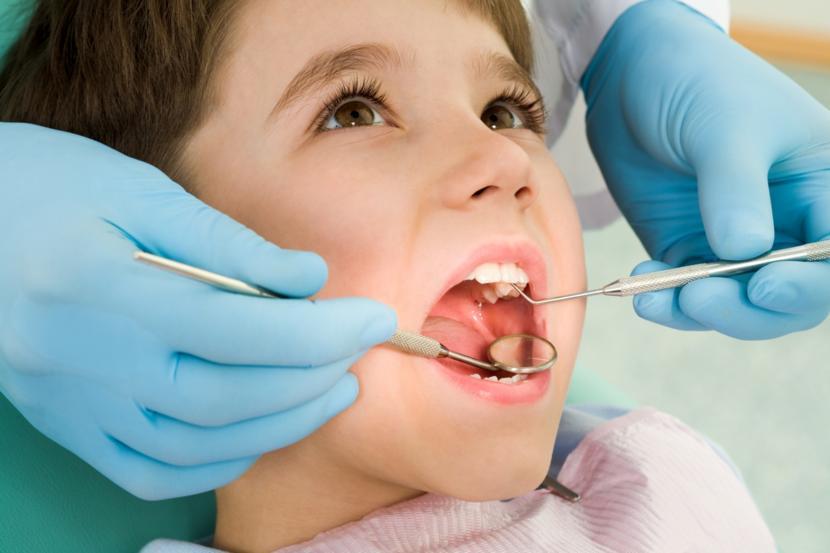The Common Dental Issues that are Associated with Celiac Disease

When compared to general population, those who have celiac disease seems to suffer from dental issues more commonly than those who suffer from other conditions.
It is said that oral health is the window to a patient's overall health, and an experienced dentist would tell patients that almost any chronic ailment would lead to changes in their teeth. This is especially true for gastrointestinal diseases like celiac disease since most gastrointestinal disorders cause malabsorption, chronic inflammation of the gut, and changes in dietary habits.
Celiac disease, also known as sprue, is a chronic, autoimmune disease that affects the small intestine. It is a disease characterized by a disruption in the absorption of many useful nutrients due to the leaky gut syndrome. All of these processes happen due to an abnormal immune response to a protein called gluten, which is present in a large quantity in some grains, especially with wheat.
One of the essential steps in preventing the progress of celiac disease is switching to a gluten-free diet, and so far, this seems to be the only course of treatment that researchers have found. However, it seems that even with a gluten-free diet those with celiac disease have more dental problems than the average person at optimal health. There could be multiple reasons for this, from a dietary imbalance to the damage that has been done before the initiation of treatment or prevention.
Dental health in celiac disease
The American Dental Association states that dental manifestations of celiac disease are quite common in both children and adults. In children, celiac disease often remains undiagnosed, or misdiagnosed, for a long period of time, which can cause children to have dry mouth, delayed dental eruptions, mouth ulcers, other oral inflammatory conditions, and dental enamel defects of both primary and permanent teeth.
Enamel defects in those with celiac disease are far more common as compared to the generally healthy population. Enamel defects in celiac differ from other conditions in being more or less symmetrical, that is affecting most of the teeth in an equal manner, although such a defect is more visible in molars and incisors. Enamel defect would often lead to the formation of spots on the teeth or other discoloration defects. In some cases, enamel may be so bad that teeth may look translucent. Defects of enamel are often graded from 0 to 4 (with no changes to severe defects).
Dental defects and mouth manifestations are frequent in celiac disease when the onset is triggered at an early age. A timely diagnosis of celiac in adults can also help to prevent these defects in a majority of cases in the future. As per the American Dental Association, celiac disease increases the risk of:
- Aphthous stomatitis, which is recurrent and difficult to treat in celiac
- Mouth ulcers and sores
- Atrophic glossitis- red, smooth and shiny tongue
- Dry mouth syndrome
- Enamel defects
- Celiac also increases the risk of mouth cancer
- Celiac may increase the risk of caries.
Simply stated, those with multiple dental problems must always think about the gastrointestinal issues like celiac disease, since it may be the underlying issue.
What causes these defects of enamel or other dental manifestations in celiac disease is not fully understood, especially considering the fact that those on a gluten-free diet are practically symptom-free. It is quite probable that these oral manifestations are due to a combination of nutritional disbalance, hypocalcemia,and vitamin D deficiency, along with various immune mechanisms.
Tooth wear in those on gluten-free diet
Earlier medical studies and literature have shown that there is a higher prevalence of tooth wear in those with celiac disease, even with the absence of gastrointestinal symptoms or malabsorption syndrome. It is thought that from at least 20% to as much as 80% of those living with celiac disease suffer from thin enamel (enamel hypoplasia).
Amato et al. from Medical School of Salerno, Italy, carried out a comparison study to find out the prevalence of various mouth diseases and dental problems in those known to have celiac disease and already eating a gluten-free diet. So, these were patients who were already managing their celiac disease well without any active gastroenterological symptoms or symptoms of malabsorption.
In the study, Amato et al. checked the 49 such participants for mouth conditions and compared them with 51 healthy subjects. They found that in the celiac group as high as 53% had recurrent episodes of aphthous stomatitis, while in the controlled group figure was just 25%, meaning that inflammatory conditions of mouth were twice as common even in managed celiac disease. At the same time, this disorder of dental enamel was present in 7 patients or 14.3%, and it was 0% in healthy subjects. None of the patients had geographic tongue. Other non-specific tooth defects due to the loss of mineralization were also much more common in the celiac group (18%), as compared to the healthy control group (6%). This data coincided with the results of previous studies of similar nature.
The study then concluded that celiac disease could be diagnosed not only based on the gastrointestinal symptoms, but also on the bases of oral health. People suffering from celiac disease, whether overt or covert, are at a much higher risk of enamel diseases and other disorders of the mouth. These dental defects are caused not just due to malnutrition, but probably due to other reasons like misalignment of dental arches, sleep bruxism (clenching or grinding of teeth while sleeping), age, and other unknown reasons.
In summary, those who have been diagnosed with celiac must take extra care of their oral health, as they are at an increased risk of enamel defects, recurrent oral ulcers, and other inflammatory oral conditions. Further, in those with a family history of celiac disease, frequent dental problems may indicate undiagnosed celiac disease.
References
- American Dental Association. Celiac Disease. http://www.ada.org/en/member-center/oral-health-topics/celiac-disease. Published September 29, 2016.
- Rashid M, Zarkadas M, Anca A, Limeback H. Oral manifestations of celiac disease: a clinical guide for dentists. J Can Dent Assoc. 2011;77:b39.
- Amato M, Zingone F, Caggiano M, Iovino P, Bucci C, Ciacci C. Tooth Wear Is Frequent in Adult Patients with Celiac Disease. Nutrients. 2017;9(12):1321.















